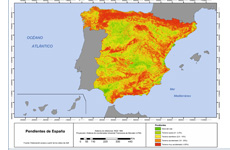
Categories
Publications
Effect of the design speed on the construction cost of the infrastructure
19/10/2015

Author/s: Ignacio González Franco
The data available on the construction costs of high speed infrastructures show an enormous range of variation: several studies mention values which fluctuate between 4 and 48 million euros2005 per kilometre of double track. This dispersion is explained by differences in orography and types of terrain, various technical, environmental and urban regulations implemented; different costs according to countries and also different technical characteristics and performance.
It is very complex to carry out a “top down” analysis that isolates the effect of all these factors and allows them to be analysed separately. For this reason, in this paper we carry out a “bottom-up” analysis to analyse the influence of the design speed of a new railway infrastructure on its investment cost. The other factors being fixed –such as unit costs, type of terrain or applicable regulations-, it is proved that there are big differences on the construction costs depending on the orography of the terrain used; but for the same orography the variation in the cost when changing the speed is not particularly important.
The conclusions of the analysis can be summarized by pointing out that, for the same speed, costs show a great variability depending on the relief of the terrain (finding differences in the order of 1 to 8), while variability in the same type of relief is more limited when changing the speed: it fluctuates between 1 to 1.3 and 1 to 1.97 when going from 200 to 350 km/h for the construction of a new double track line.
Keywords: High speed costs, construction of lines, speed, design of lines.
Publication: 360.high speed magazine Nº 3 - October 2015, pp. 33-53
Download paper »



